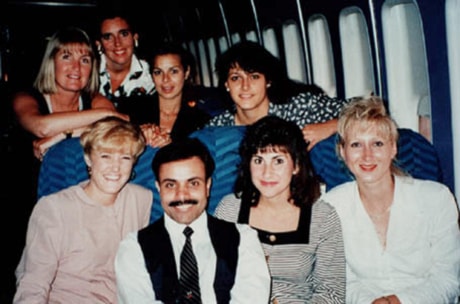MONTREAL — The deadliest aviation disaster involving a Canadian-registered aircraft marks its 20th anniversary Monday, its memory faded from the collective national consciousness even before the crash debris was cleared away.
The lives of all 261 on board the ill-fated Nationair plane, including 14 Canadian crew members, were lost on July 11, 1991 when the plane crashed down in Jeddah, Saudi Arabia.
While Canadians have seen a public inquiry and several memorial sites dedicated to the 1985 Air India tragedy, few today recall the crash that currently ranks as the 15th-worst aviation disaster in history.
“Maybe it’s because it didn’t happen on Canadian soil,” said Dale Humphrey, a former Nationair senior flight attendant.
“Apart from the initial report, it never really got very much press.”
Though Humphrey was offered the contract to work that particular charter shift, he turned it down.
It turned out to be a wise decision.
Two tires of Flight 2120, chartered by Nigeria Airways to transport Muslims to Mecca for the Hajj pilgrimage, ignited upon takeoff.
Shreds of burning rubber were kicked up into the wheel well, quickly spreading flames throughout the fuselage.
A third tire exploded just after the DC-8-61’s landing gear retracted, knocking out the craft’s electrical and hydraulic systems.
Within minutes the flight, fully engulfed in flames, broke apart in midair and plummeted into the desert.
“When it happened, it was all over CNN for a week. But a lot of people (in Canada) didn’t even hear about the crash,” said Lina Colacci whose 23-year-old sister Dolores, a flight attendant, perished in the disaster.
Allegations of questionable safety practices had long been rumoured at Nationair.
Subsequent media reports revealed that the carrier regularly flew aircraft that were not airworthy — and that Transport Canada was aware of the practice.
They said the under-inflated and well-worn tires were due to be changed days earlier. However, delays from the previous day’s emergency repairs for wing and radar issues — along with a misplaced set of keys for the tire storage depot — prompted the airline to dispatch the un-airworthy plane that morning, as planned.
The federal government declared after an investigation, in 1998, that there were deficiencies in a number of operational and management areas at Nationair, especially in maintenance work.
“My sister had kept a journal,” said Colacci, “and she had written how she was scared that the safety of Nationair was lacking.”
Colacci recounted journal entries that described staff implementing makeshift repairs, such as plugging up holes in the bathroom with rags.
“She was getting ready to quit because of the fear of something happening.”
This was mere weeks before the crash.
After an early-morning phone call from a Nationair representative informing the Colacci family that there had been an accident, it took another week before they learned that Dolores’ body could not be recovered.
“They said the bodies were cremated in the air because of the explosion,” said Lina Colacci.
However, the airline did offer an alternative as it recognized the need for closure for Colacci’s mother: it volunteered to put some sand in a coffin and ship it back under the pretext that it contained Dolores’ remains.
The Colacci family declined.
Although a number of surviving family members launched a wrongful death class-action lawsuit against Nationair, Colacci said their efforts were fruitless. “They went bankrupt (in 1993) and that was it.”
Four months after the crash, Nationair staff went to a scheduled union negotiations meeting and found themselves locked out of their jobs, leading to one of Canada’s longest airline labour disputes.
It was 16 months before they returned to work and, within a week of the staff retraining period, Nationair filed for bankruptcy protection. At this point, Nationair owed the Canadian government in excess of $60 million in unpaid taxes and landing fees.
The survivors are united in their sentiment that Monday’s memorial not be a maudlin event.
“We all did that 20 years ago,” said Humphrey, describing the trauma of attending three friends’ funerals on one day.
Instead, they’re making a concerted effort to honour their former colleagues’ memories as opposed to mourning their deaths.
Former Nationair flight attendant Suzanne Regan wrote in an email that, “... this memorial is not about us. It is definitely for us but not about our individual experience.”
Humphrey made and maintains a website not only as a tribute to his friends, but to all the passengers. “People always tend to forget that there were another 247 people who died.”
“Their death taught me, at (age) 21, to see the big picture,” said Regan, “not take things for granted, and that nothing lasts forever. Except love.”
